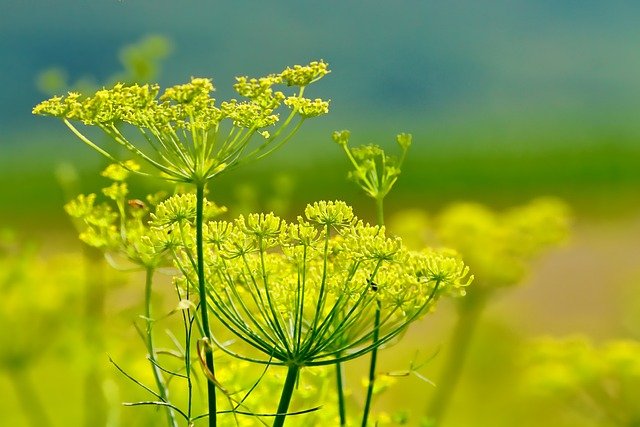Natural Pest Repellent Plants: A Comprehensive Guide to Botanical Pest Control
Pest management is a critical aspect of gardening and home maintenance. While chemical pesticides offer quick solutions, they often come with environmental and health concerns. Natural pest repellent plants provide an eco-friendly, sustainable alternative that not only protects your space but also enhances its aesthetic and ecological value.
Understanding Botanical Pest Repellents
Plants have evolved complex defense mechanisms against insects and other pests. These natural compounds—including essential oils, tannins, and other biochemical substances—serve as powerful deterrents. By strategically incorporating these plants into your garden and home, you can create a multi-layered defense system that is both effective and environmentally responsible.
1. Fennel: The Snail and Pest Resistance Specialist

Botanical Name: Foeniculum vulgare Native Region: Mediterranean areas
Fennel is far more than a culinary herb—it's a botanical powerhouse in pest control. Its unique characteristics make it particularly effective against snails and other garden pests.
Pest Repellent Mechanisms:
- Contains volatile oils that create an unpleasant environment for snails
- Releases compounds that disrupt snail movement and feeding patterns
- Provides a physical barrier due to its dense, feathery foliage
Cultivation Tips:
- Thrives in full sun to partial shade
- Prefers well-draining soil with moderate fertility
- Can grow 3-5 feet tall, making it an excellent border plant
- Annual or perennial, depending on climate zone
- Attracts beneficial insects like swallowtail butterfly larvae
Placement Strategies:
- Plant around vegetable gardens to protect vulnerable crops
- Create barriers in shaded, moisture-prone areas
- Ideal for preventing snail damage in:
- Herb gardens
- Flower beds
- Young tree plantations
- Container gardens
2. Mint: The Versatile Insect Repellent

Botanical Name: Mentha spp. Native Region: Europe and Mediterranean
Mint is renowned for its powerful pest-repelling properties and incredible adaptability. Its strong aromatic oils create an effective natural insect deterrent.
Pest Repellent Range:
- Mosquitoes
- Fleas
- Moths
- Flies
- Ants
- Some spider species
Varieties and Specific Benefits:
- Peppermint: Most potent for pest control
- Spearmint: Gentler aroma, still effective
- Chocolate Mint: Unique scent, additional repellent properties
Cultivation Considerations:
- Extremely aggressive spreader—recommended to plant in containers
- Prefers partial shade to full sun
- Requires consistent moisture
- Thrives in most climate zones
- Can be grown indoors and outdoors
Advanced Application Methods:
- Fresh leaf placement
- Mint essential oil sprays
- Dried mint sachets
- Companion planting in vegetable gardens
3. Lavender: Aromatic Pest and Stress Deterrent

Botanical Name: Lavandula spp. Native Region: Mediterranean, southwest Asia
Lavender offers multi-dimensional benefits beyond pest control, including stress reduction and aesthetic appeal.
Comprehensive Pest Repellent Profile:
- Moths
- Fleas
- Mosquitoes
- Mice
- Rats
- Some ant species
Varieties and Specialized Uses:
- English Lavender: Most common, strongest pest-repelling properties
- French Lavender: Broader leaves, milder pest control
- Spanish Lavender: Unique shape, effective in warmer climates
Cultivation Recommendations:
- Requires full sun exposure
- Thrives in well-draining, slightly alkaline soil
- Drought-tolerant once established
- Ideal for rock gardens and xeriscaping
- Attracts pollinators like bees and butterflies
Strategic Placement:
- Doorways and window frames
- Garden borders
- Indoor sachets
- Closet and drawer protection
4. Chrysanthemums: Natural Insecticide Powerhouse

Botanical Name: Chrysanthemum spp. Native Region: Asia and northeastern Europe
Chrysanthemums contain pyrethrin, a compound so effective it's used in many commercial organic insecticides.
Advanced Pest Control Mechanisms:
- Natural pyrethrin production
- Disrupts insect nervous systems
- Provides immediate and long-lasting protection
Beneficial Insect Attraction:
- Ladybugs
- Lacewings
- Hoverflies
- Parasitic wasps
Cultivation Strategies:
- Prefer full sun to partial shade
- Well-draining, fertile soil
- Multiple color varieties available
- Bloom in late summer to fall
- Perennial in many climate zones
Integrated Pest Management:
- Plant around vegetable gardens
- Create borders in ornamental landscapes
- Use as companion plants for vulnerable crops
5. Marigolds: Garden Guardians and Pollinator Magnets

Botanical Name: Tagetes spp. Native Region: Mexico and Central America
Marigolds are more than decorative—they're sophisticated pest management tools.
Pest Repellent Spectrum:
- Whiteflies
- Aphids
- Nematodes
- Mexican bean beetles
- Some mosquito species
Ecological Benefits:
- Attract beneficial predatory insects
- Support pollinator populations
- Improve overall garden biodiversity
Cultivation Techniques:
- Easy to grow from seed
- Thrive in full sun
- Tolerate various soil conditions
- Annual in most regions
- Multiple size varieties available
Comprehensive Implementation Strategies
- Diversity is Key: Combine multiple plant species for broader protection
- Consider Local Ecosystem: Adapt strategies to your specific climate and garden conditions
- Maintenance Matters: Regular pruning and plant health are crucial for optimal pest control
- Holistic Approach: Integrate plant-based methods with other natural pest management techniques
Conclusion
Natural pest repellent plants offer a sustainable, beautiful alternative to chemical pesticides. By understanding their unique properties and implementing them strategically, you can create a thriving, balanced garden ecosystem that naturally manages pest populations while supporting biodiversity.
